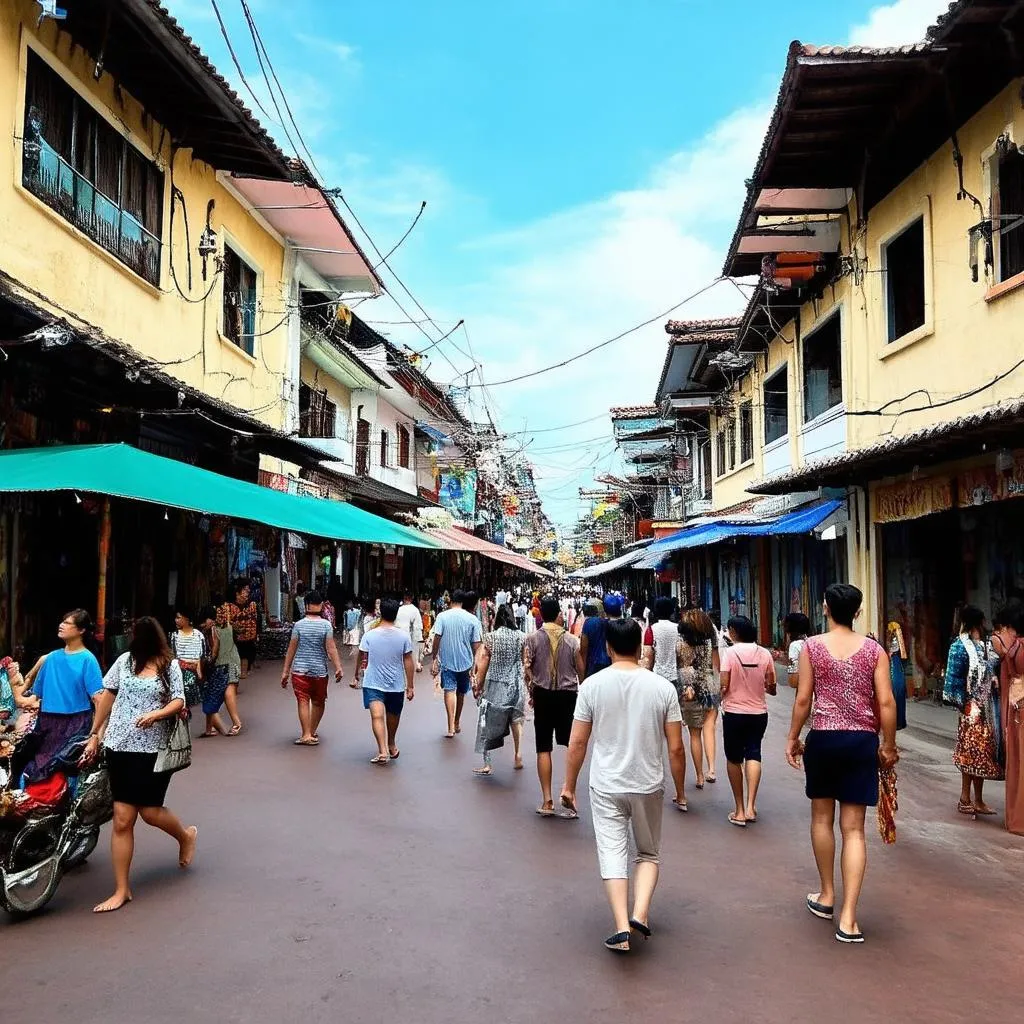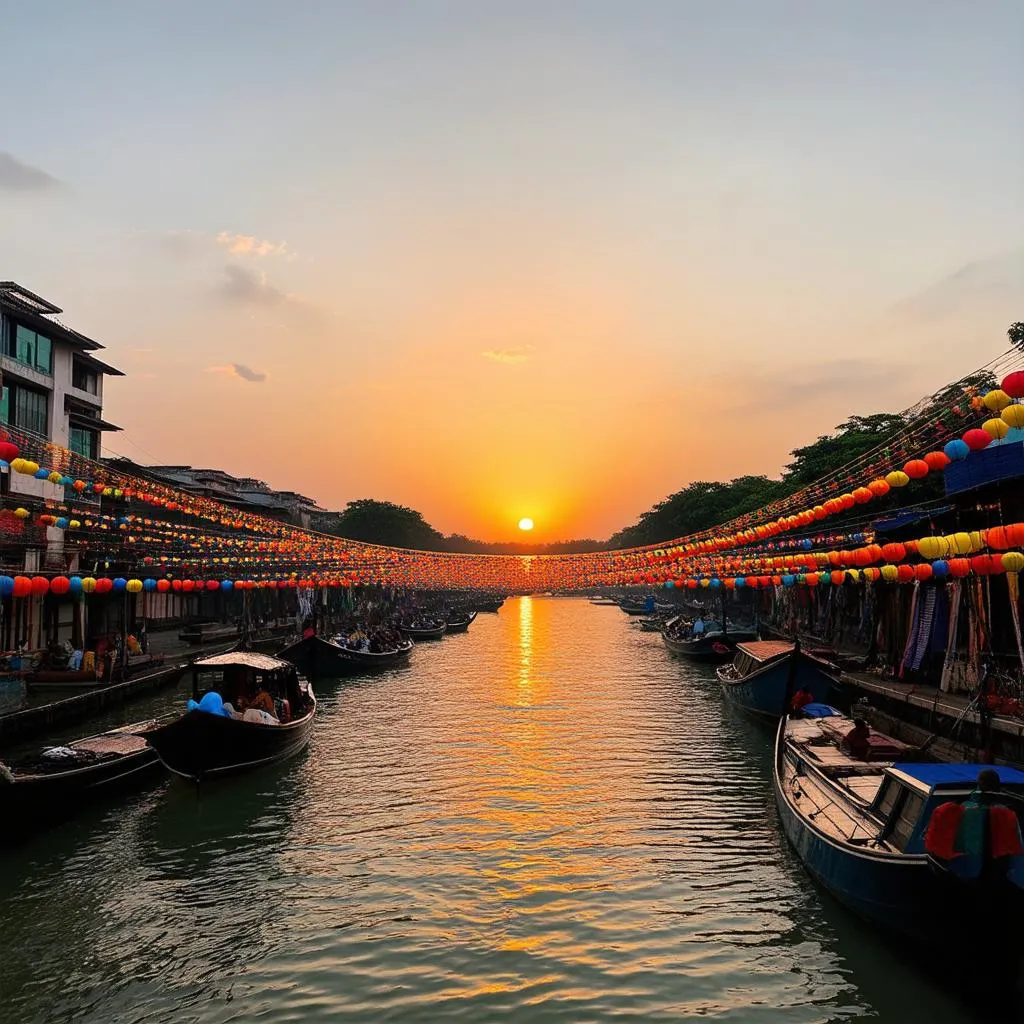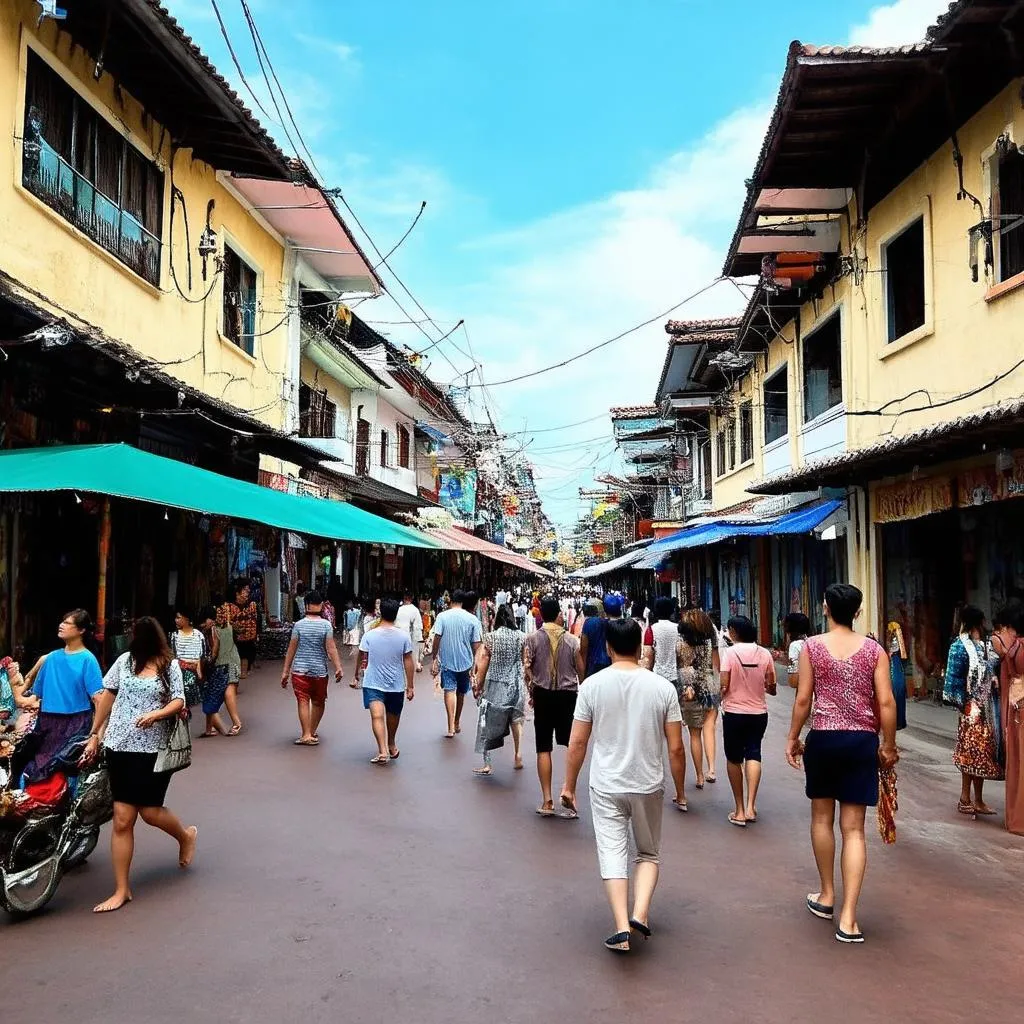“Where the Thu Bon River meets the sea,” whispers the old Vietnamese proverb, “lies a town of dreams.” And indeed, Hoi An, with its vibrant silk lanterns, ancient architecture, and delectable cuisine, has long captivated the hearts of travelers. But even the most enchanting destinations cast shadows.
Just last year, I found myself standing amidst the throngs of tourists on Hoi An’s iconic Japanese Covered Bridge, jostling for that perfect photo opportunity. It was then, amidst the cacophony of clicking cameras and chattering voices, that I felt it – a sense of dissonance. This wasn’t the serene beauty I had envisioned. It was then I realized that beneath Hoi An’s charm lay challenges that needed acknowledgment.
Beyond the Picture Postcard: Examining Hoi An’s Tourist Troubles
While Hoi An has done a commendable job in preserving its heritage, the influx of tourists brings its own set of issues.
1. Overcrowding and Its Discontents
Hoi An’s compact size, once part of its charm, can feel stifling during peak season. The narrow streets, particularly around the Old Town and the Japanese Covered Bridge, become choked with tour groups, making it challenging to appreciate the intricate architecture or soak in the atmosphere.
 Hoi An Old Town
Hoi An Old Town
Professor Nguyen Minh Tuan, a tourism expert at the Hanoi Open University, remarks in his book “Sustainable Tourism in Vietnam”: “Managing visitor numbers without compromising the authenticity of the experience is a tightrope walk, and Hoi An is still finding its balance.”
2. The Price of Popularity
The increasing demand for accommodation, food, and souvenirs in Hoi An has inevitably led to price hikes. While this is great for local businesses, it can be a deterrent for budget-conscious travelers who might find better value elsewhere in Vietnam.
Here’s a quick glimpse of common expenses:
| Expense | Estimated Cost (USD) |
|---|---|
| Budget Meal | $5-10 |
| Mid-Range Meal | $15-25 |
| Budget Accommodation | $10-30 |
| Mid-Range Hotel | $40-80 |
| Entrance Fees (per site) | $5-7 |
3. Cultural Commodification
The line between cultural preservation and commercialization can be thin. Hoi An’s charm lies in its traditions, but with mass tourism comes the risk of these traditions becoming staged performances rather than genuine expressions of culture. For instance, the traditional lantern-making workshops, while a beautiful experience, can sometimes feel less authentic and more like a tourist trap.
4. Environmental Concerns
The increased foot traffic, particularly during lantern festivals, puts a strain on Hoi An’s ancient infrastructure and environment. The beautiful Thu Bon River, once a lifeline for the town, now grapples with pollution from boat traffic and waste.
 Hoi An River
Hoi An River
Navigating the Labyrinth: Tips for a Meaningful Hoi An Experience
Despite these challenges, experiencing Hoi An’s magic is still possible with a little planning and mindfulness.
Plan Your Visit Strategically
- Shoulder Seasons are Key: Consider visiting during the shoulder seasons (March-May or September-October) to avoid crowds and enjoy more moderate weather.
- Embrace the Early Hours: Rise with the sun and explore the Old Town before the tour buses arrive.
- Venture Beyond the Old Town: Explore the surrounding countryside by bicycle, visit the Tra Que Vegetable Village, or take a boat trip to Cam Kim Island for a glimpse of local life.
Be a Responsible Traveler
- Support Local Businesses: Opt for family-run restaurants, buy handicrafts directly from artisans, and stay in locally owned guesthouses.
- Respect Local Customs: Dress modestly when visiting temples and pagodas.
- Bargain Respectfully: While bargaining is expected, remember to be fair and polite.
FAQs: Your Hoi An Queries Answered
1. Is Hoi An safe for tourists?
Yes, Hoi An is generally safe for tourists. However, as with any destination, it’s wise to take precautions against petty theft and be mindful of your belongings.
2. When is the best time to visit Hoi An?
The best time to visit is during the shoulder seasons (March-May and September-October) for pleasant weather and fewer crowds.
3. How many days do I need in Hoi An?
Three to four days is a good amount of time to explore the town, enjoy its culinary delights, and take some day trips to surrounding areas.
4. What are some must-try dishes in Hoi An?
Don’t miss out on Cao Lau (a Hoi An noodle specialty), Mi Quang (turmeric noodles), and White Rose dumplings.
Finding Your Own Hoi An Story
My journey through Hoi An, despite its challenges, was ultimately a rewarding one. I discovered hidden alleyways adorned with colorful lanterns, sampled local delicacies at family-run eateries, and learned the art of silk painting from a patient artisan.
Hoi An, like any well-loved destination, is a tapestry woven with both light and shadow. It’s up to us, the travelers, to approach it with sensitivity, respect, and a sense of adventure, ensuring that its magic continues to shine brightly for generations to come.
For more insights and travel tips on exploring Vietnam, visit TRAVELCAR.edu.vn.

